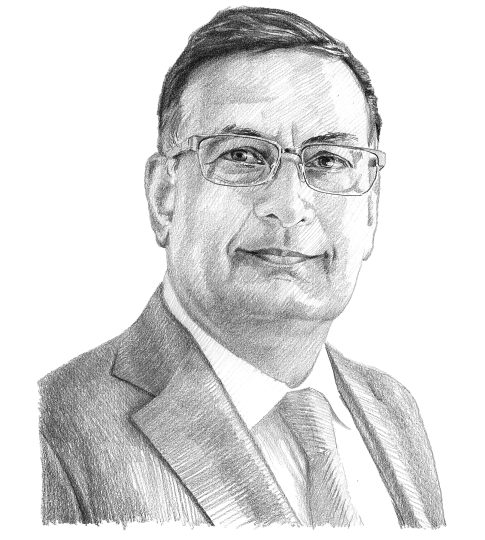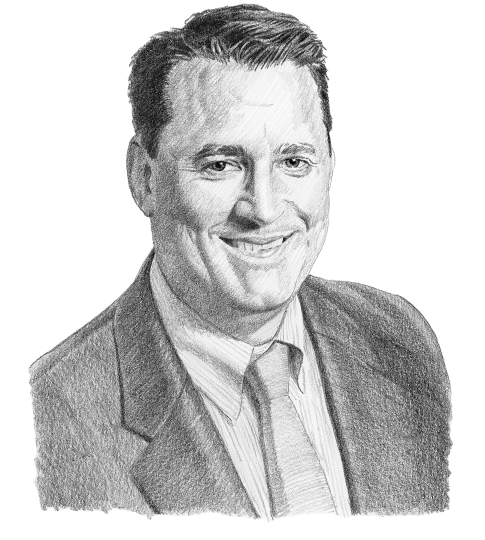Morocco: Reforms instead of government repression
The Moroccan monarchy stands out among its peers in North Africa and the Middle East for democratizing governance and modernizing the economy.

In a nutshell
- Morocco is making strides toward political and economic stability
- Rabat has democratized its governance and is attracting foreign investment
- Barring unexpected headwinds, the country’s outlook is positive
Over the past two decades, Morocco has undergone reforms on the political, economic and international fronts. While risks to growth and stability remain, the country is positioned to consolidate its middle-power status. Morocco’s unique governing system, however, makes its strategy hard for its neighbors to replicate.
The path to reform
During the early 2010s, the wave of Arab Spring protests swept the Maghreb and the Middle East. It exposed the fragilities of social contracts (albeit with significant differences) combined with political authoritarianism, high levels of corruption and heavily subsidized economies.
The uprisings had different outcomes, including a civil war in Libya and leadership changes in Egypt and Tunisia. However, while the Tunisian Jasmine Revolution was briefly cheered as the Arab Spring’s best hope, the case of Morocco, where the government implemented fundamental political and economic reforms in response to the February 20 Movement, offers interesting lessons.
Revolts caused by a lack of necessities were not new in Morocco. The 1981 Bread Riots in Casablanca had been sparked by rising food prices. Then, the government responded with economic reforms implemented in 1983, seeking to reduce budget deficits, promote exports and devalue the national currency. The measures succeeded in easing inflation and the country’s associated social problems, especially as compared to its neighbors.
When many Moroccans again took to the streets on February 20, 2011, mainly calling for political change, the government refrained from using widespread violence in response. The long-established rule of the Alawite royal dynasty – in power since 1631 – and the current ruler’s openness to calibrated social changes, such as the 2004 family code reform, facilitated a relatively peaceful path toward reform.
Facts & figures
Morocco’s governance system
- Government structure: A constitutional monarchy with a multi-party system where the king shares power with an elected parliament and an independent judiciary.
- Executive power: Exercised by the government, led by the prime minister as the head of government.
- Legislative power: Vested in the government and the two chambers of parliament: the Assembly of Representatives of Morocco, and the Assembly of Councillors.
Less than a month after protests began, King Mohammed VI announced a series of political and institutional steps, including a new draft constitution, which was approved in a referendum in July 2011. While the king continued to hold significant power, the new constitution mandated that the head of government be appointed from the party that wins the most seats in parliament. It also established a constitutional court and promoted a decentralized governance structure.
Foreign direct investment increased, and the middle class expanded from 53 percent of the population in 2012 to nearly 62 percent in 2019.
The reforms aimed to address the demands for greater democracy and included commitments to enhance judicial independence, combat corruption and protect freedoms, including gender equality and the recognition of Berber as an official language alongside Arabic. The changes were met with overwhelming approval, but some activists argued that the monarchy’s role was not reduced enough.
‘New Development Model’
Despite regional instability, Morocco’s gross domestic product (GDP) experienced a notable overall growth of 27 percent from 2010 to 2018. During this period, foreign direct investment increased, and the middle class expanded from 53 percent of the population in 2012 to nearly 62 percent in 2019. Additionally, the inflation rate remained relatively low and stable.
However, the country continued to face challenges with weak growth and persistently high unemployment rates, particularly among the youth. These issues highlighted the need to complement governance modifications with structural economic reforms to ensure sustainable development and job creation.
More on Morocco
- France torn between Morocco and Algeria
- Will Western Sahara trigger the next crisis?
- The paradoxes of the EU’s Africa policy
- Scenarios for African migration to Europe
In October 2017, King Mohammed VI made his first call to reevaluate Morocco’s development model and align it with the country’s evolving needs. In a later speech to the parliament, the ruler urged the Special Commission on the Development Model, established in 2019, to produce a “realistic report” on the situation, even if “that means going into uncharted territory or causing a political earthquake.” Mohammed VI emphasized the importance of inventiveness in creating “tailored solutions” for meeting the needs and aspirations of Moroccan citizens.
Eventually, Morocco’s New Development Model was officially launched for implementation in October 2021 after parliamentary approval. The project sought to address such elementary problems as a lack of competitiveness in the economy, poor coordination between government policies and goals, overcentralized decision-making, ineffective regulations and low public trust in the justice system.
The solutions, informed by extensive consultations with citizens and stakeholders across the country, have been structured around four crucial pillars:
- Boosting economic productivity and diversifying the economy
- Investing in human capital and skills development
- Promoting social inclusion and strengthening community ties
- Decentralizing power and resources to the regions, as mandated by the constitution
However, a big hurdle on the road to growth remained: Morocco’s enduring and costly subsidy system. Subsidies for liquefied gas, for example, have been in place since the 1940s. In 2012, the costs of subsidies peaked at 6.6 percent of GDP, an amount larger than the country’s total investment budget for that year. Rabat has adopted a phased strategy to replace these subsidies with direct cash transfers. Fuel subsidies were cut in 2015, and in May 2024, the government began removing subsidies on cooking gas.
Advantages and persisting vulnerabilities
Morocco has made significant strides due to its reformist drive. Rabat’s industrial policies (such as the 2009 Plan for Industrial Emergence and the 2014-2020 and 2021-2025 Industrial Acceleration Plans) and the New Development Model have created a dynamic economic environment. This improved the country’s attractiveness for investment, particularly in the automotive and aerospace sectors.
Morocco’s return to the African Union in 2017 has led to increased investments in commodities and construction sectors across sub-Saharan Africa.
Regulatory reforms have also improved the business climate, contributing to reduced uncertainty and costs. The establishment of dedicated industrial zones, a strategic location for trade and a skilled labor force, have further enhanced Morocco’s position as a competitive player in the regional market.

The country has also benefited from a stable political environment and limited jihadist activity within its borders. Rabat bolsters this stability by effective soft power diplomacy that includes economic and faith-based initiatives aimed at countering radicalism.
Morocco’s return to the African Union in 2017 has led to increased investments in commodities and construction sectors across sub-Saharan Africa. The country’s relationships with European nations have deepened, although some tensions exist, particularly territorial issues with Spain. In 2020, Morocco joined the United States-sponsored Abraham Accords, enhancing its diplomatic standing in the region.
Rabat’s commitment to stability and countering extremism has boosted Morocco’s regional and global influence. It is a hub for MICE (Meetings, Incentives, Conferences and Exhibitions) tourism, hosting significant events like COP 2022 and co-hosting the 2030 FIFA World Cup.
However, internal vulnerabilities and the threat of potential regional shocks have not dissipated completely. The strength of Moroccan agriculture, which relies on rainfall, makes the country susceptible to drought periods like those that occurred in 2023 and 2024. Another significant challenge is the low labor market efficiency due to insufficient economic growth, rising labor costs and high youth unemployment, approaching 23 percent in 2023.
Another problem that Morocco must reckon with is its position as a country of origin, transit and destination for migration flows. The rising migratory pressure from sub-Saharan Africa could exacerbate internal tensions. At the same time, brain drain remains a significant concern for a nation striving to transition to a higher value-added economy in the global market.
Scenarios
Most likely: Continued stability and growth
Morocco’s development is poised to gain momentum in the coming years as the economy begins to reap the benefits of recent reforms. Growth rates are expected to be buoyed by the expansion of the automotive sector, tourism and anticipated digital innovations (linked to Oracle’s plan to establish two data centers in the country), along with the government’s forthcoming Digital Strategy 2030, a collaborative initiative between the private and public sectors. Although foreign direct investment experienced a sharp decline in 2023, it is expected to recover as Morocco prepares to host the 2030 World Cup.
Under these circumstances, Morocco could further consolidate its international standing, deepening its diplomatic ties and leverage with sub-Saharan Africa, Europe and Gulf countries.
While this scenario would confirm the success of Rabat’s reform strategy, other Maghreb countries can hardly replicate it, as they lack strong leadership as well as political and social stability.
Less likely: Getting stuck in a moderate growth trap
Destabilization can materialize. Because of rising labor costs, slower technology catch-up and a still heavily subsidized economy, Morocco’s competitiveness could weaken vis-a-vis other emerging economies.
The EU represents another set of potential problems. As the EU market becomes more critical for Morocco (in 2022, 56 percent of Morocco’s exports headed there), the risks come from the EU’s endless cost-imposing regulations and its potential economic stagnation. There is also the possibility of escalation in existing conflicts over Western Sahara (a non-negotiable issue for Morocco), migration (an issue reshaping European politics) and the sensitive Morocco-EU fisheries deal, which is set to expire.
Growth stagnation could expose Morocco to inflationary pressures and potential social unrest – just as the government accelerates the removal of subsidies.
For industry-specific scenarios and bespoke geopolitical intelligence, contact us and we will provide you with more information about our advisory services.









